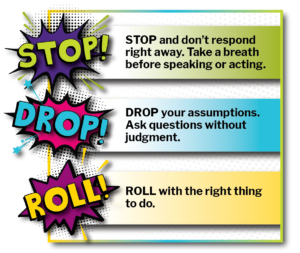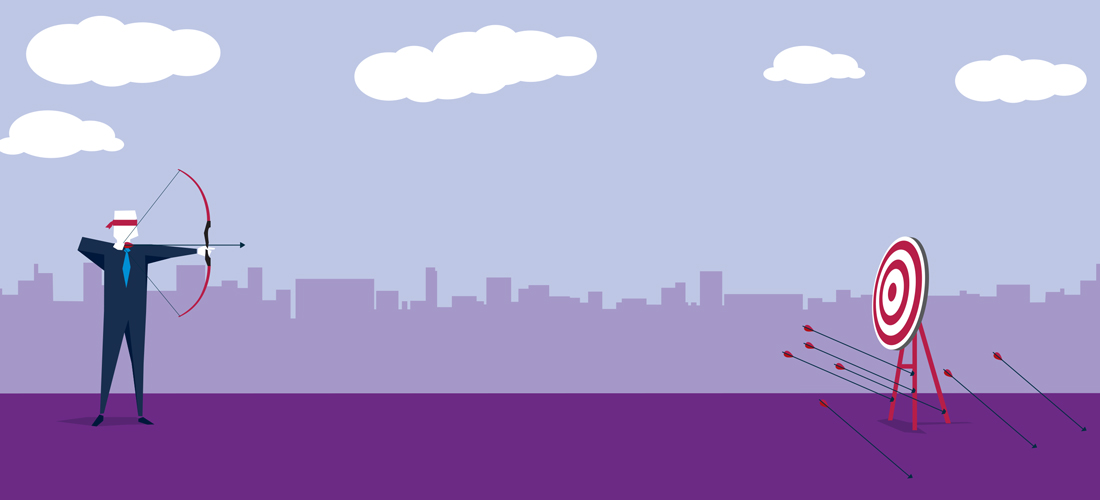In our last blog post, we laid out why many studies have concluded that unconscious bias training “doesn’t work.” The typical approach falls short in several ways:
- Awareness without action
- Education without empathy
- Training without a train
Before we talk about that first one, let’s officially redefine success for unconscious bias training efforts.
What’s our goal?
Many unconscious bias training sets out with the following goals, none of which are realistic to expect from one training effort.
Unachievable measures of success:
- Representation numbers at leadership levels reflect the broader organization
- Systems and structures are transformed to drive equity
- Bias is eradicated
The first two measures of success are certainly admirable and should be goals for a broader DEI effort. But for unconscious bias training? They are naïvely ambitious and not achievable.
To the third measure, we heard a CEO say this to kick off an unconscious bias training we recently observed: “We desire to eradicate bias in our organization.”
Bias can never be eradicated; it can only be mitigated.
This third goal is simply not attainable. If these are the goals of our unconscious bias training efforts, no wonder 400 studies conclude that these trainings don’t work!
It’s time to reset our unconscious bias goals. We propose a series of achievable measures of success, including:
- Individuals have elevated their consciousness about bias and its impact.
- Individuals develop more empathy and become more curious, taking tangible steps to further educate themselves.
- Individuals are more equipped to take proactive steps to mitigate the impact of bias in the micro-moments of everyday work.
What do you think? Are these measures specific enough? Easy enough to measure? Ambitious enough? Realistic?
One Big Step to Achieve These Goals
There are many ways within unconscious bias training efforts to take steps toward these redefined measures of success. But a big one? To have a memorable, easy-to-use, in-the-moment tool to disrupt bias where it starts – in our brains. To have a tool that an individual can recall in everyday work, from running a meeting to building relationships, from product innovation to making talent decisions.
To do this, we recommend that people use the Stop, Drop, and Roll™ bias mitigation model in the course of their decision-making and collaborations. While this version isn’t intended to help if your clothes catch on fire, it can help individuals become more aware of the impact of their own bias – and then do something about it.
Perhaps you’re a hiring manager. As you prepare to conduct interviews and review candidate information with the interview panel, you find yourself mentally critiquing, or already disqualifying, candidates (pick any category – too old, too young, gap in resume, functional transition, unfamiliar name to you, etc.). Fortunately, you notice what’s happening within your cranium.
First, you STOP. You don’t announce your potential bias to the group. You just stop, and don’t say anything  (which I know is tough for some of us leaders!).
(which I know is tough for some of us leaders!).
Next, you DROP the assumptions you just made. You start to formulate questions that might get to the heart of what the job most requires and whether that matches elements of the candidate’s experience and potential. And you withhold judgment until you can speak with the candidate themselves.
Then, you ROLL with the right thing to do. What is that, though? There are so many permutations of criteria to identify the “right thing,” of course. But if you’ve created mental rigor for steps 1 and 2, step 3 becomes clearer and clearer over time.
A Reminder
The Stop, Drop, and Roll™ bias mitigation model will not eradicate the impact of bias from the workplace. But it has the potential to help individuals and organizations make progress on each achievable measures of success, as articulated earlier:
- To elevate consciousness of bias and its impact
- To develop more empathy and curiosity
- To take steps in the micro-moments of work to mitigate bias
Stay tuned for the next blog in our series, where we’ll pose the question: If you are pursuing unconscious bias training efforts, how can you educate with empathy? See you then!









